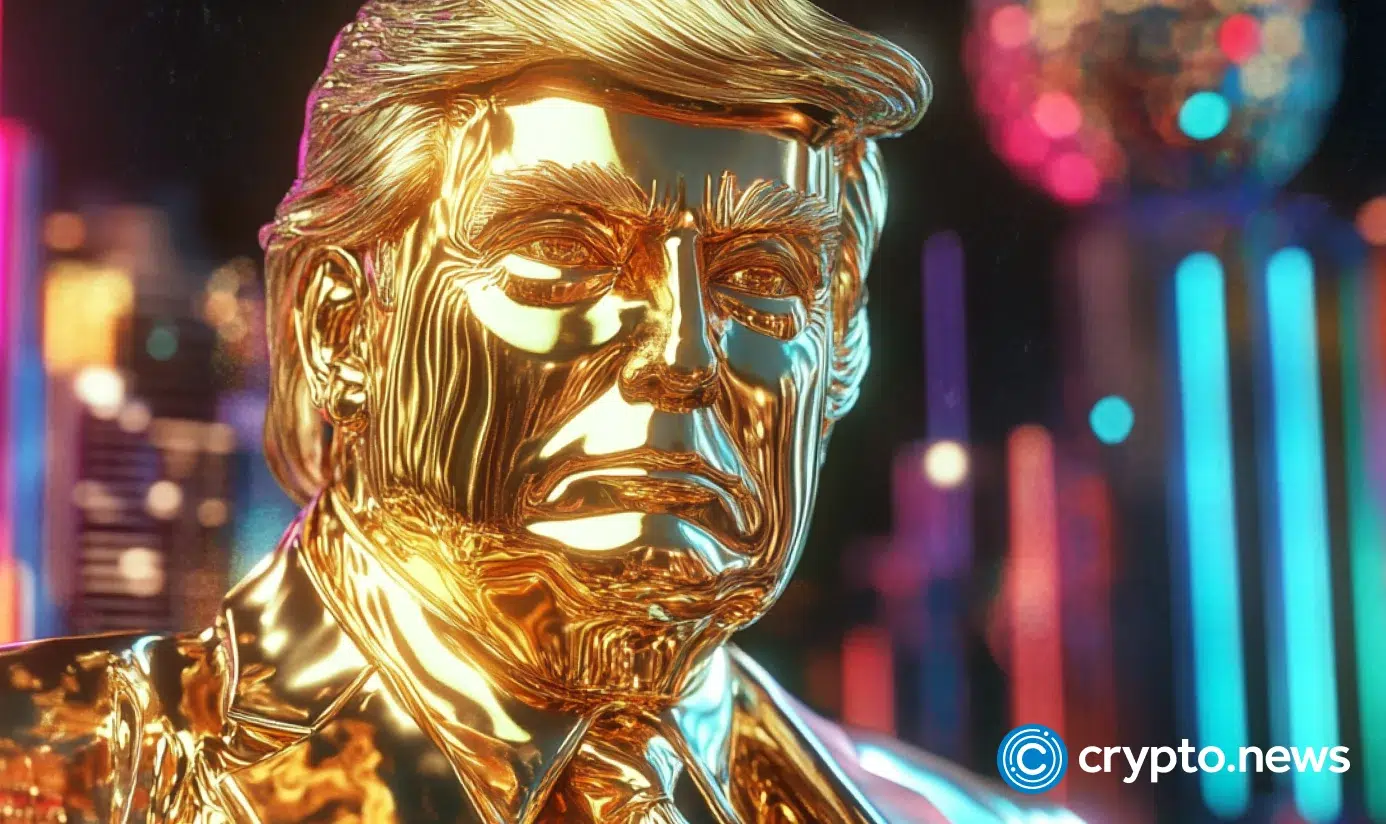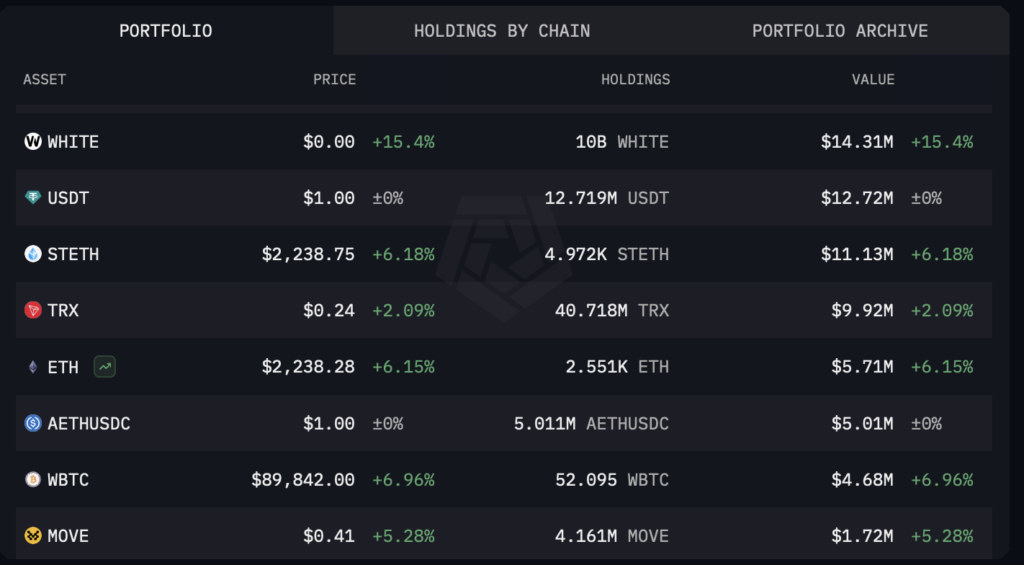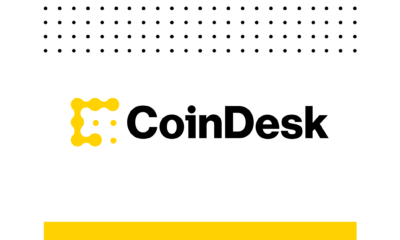DeFi
Is Trump’s Strategic Crypto Reserve Just a Proxy Pump for WLFI?
Published
2 months agoon
By
admin
Trump is building America’s crypto future — but why does WLFI seem to be the biggest winner? Is the Crypto Strategic Reserve for the country or just for his portfolio?
World Liberty Financial’s deep ties to reserve assets
For months, whispers of a U.S. crypto strategic reserve floated around Washington, but now, President Donald Trump has made it official. On Mar. 2, he directed the President’s Working Group on Digital Assets to establish a reserve comprising key cryptocurrencies.
Initially, the inclusion of Ripple (XRP), Solana (SOL), and Cardano (ADA) stirred excitement among supporters, yet the glaring absence of Bitcoin (BTC) raised eyebrows.
Within an hour, Trump clarified that BTC and Ethereum (ETH) would be “at the heart of the reserve,” settling some concerns — but not all.
Now, attention is shifting to an entirely different issue: the financial entanglements surrounding World Liberty Financial (WLFI), a DeFi platform tied to the Trump family.
As of Mar. 5, World Liberty Financial (WLFI) holds approximately $92 million in crypto assets. Ethereum makes up $6 million (6.5%), while Lido Staked Ethereum (stETH) accounts for $11 million (12%), and Wrapped Bitcoin (wBTC) holds $5 million (5.4%).

While neither stETH nor wBTC are officially part of the U.S. strategic reserve, their price movements closely track Ethereum and Bitcoin, respectively. This means that, in practical terms, WLFI has $22 million — roughly 23.9% of its total holdings — tied to assets that directly or indirectly align with the newly established reserve.
At its peak, Ethereum held the largest share of WLFI’s portfolio, reaching $266 million (64.4%), while Wrapped Bitcoin accounted for $67 million (16.2%).
This overlap raises a fundamental question: is this initiative a genuine step toward securing America’s digital future, or a thinly veiled maneuver to pump WLFI and Trump-linked crypto holdings? Let’s explore.
The Trump family’s crypto stake
When President Trump announced the reserve, the internet erupted — not in celebration, but in speculation. Accusations of monetizing the presidency are nothing new for Trump, but this time, the concerns run deeper.
Critics argue that the reserve is a calculated move to drive up the value of assets tied to Trump and his family. The numbers seem to support this theory — Trump and his affiliates hold a 60% stake in WLFI. If demand for ETH and other assets surges, so does the value of WLFI’s holdings, creating a financial windfall for them.
The Trump Organization insists there’s no conflict of interest. They say the president has stepped away from business dealings, just as he did during his first term.
Trump’s children now handle operations, an independent ethics lawyer oversees the company, and an outside firm manages his investments, according to Reuters.
Watchdogs argue that these measures are purely cosmetic, pointing out that similar actions did little to separate his business empire from his political power between 2017 and 2021.
Adding fuel to the fire, Trump’s personal financial involvement in the crypto space has only grown. Just days before his inauguration, the Official Trump (TRUMP) meme coin launched, quickly skyrocketing to a $15 billion market cap within 48 hours.
Not to be outdone, Melania Trump introduced her own token, Official Melania Meme (MELANIA), which saw billions in liquidity almost instantly.
Watchdog groups have raised alarms, noting that Trump-affiliated companies owned 80% of the total supply at launch, meaning the vast majority of profits flowed directly to those closest to him.
Peter Schiff, a longtime critic of both crypto and Trump, openly questioned why Trump manipulating XRP, SOL, and ADA was any different from government officials enriching their families through financial kickbacks.
I agree with @elonmusk and @joerogan that it’s a disgrace that USAID employees used their office to enrich their families by taking kickbacks on grant money to bogus non-profits. But why is it OK for Trump to use his office to enrich his family by manipulating XRP, SOL, or ADA?
— Peter Schiff (@PeterSchiff) March 2, 2025
Meanwhile, political strategist Rick Wilson called the strategic reserve the “greatest single financial scam of all eternity,” predicting an inevitable collapse.
The “Strategic” Bitcoin “Reserve” will go down in history as the greatest single financial scam of all eternity.
Nothing will rival this rugpull. Nothing.
— Rick Wilson (@TheRickWilson) March 3, 2025
Bitcoin maxis push back on Trump’s decision
For a president who marketed himself as “pro-crypto,” Trump likely expected broad industry support for his new reserve. Instead, he’s facing backlash — not from anti-crypto critics, but from some of his former allies who once supported his return to the White House.
Among the most vocal critics are the Winklevoss twins, Tyler and Cameron, who each donated $1 million to Trump’s election campaign. While they supported the idea of a U.S. crypto reserve, they were caught off guard by the inclusion of assets like XRP, Solana, and Cardano.
“I have nothing against XRP, SOL, or ADA,” Tyler Winklevoss wrote, “but I do not think they are suitable for a Strategic Reserve. Only one digital asset in the world right now meets the bar, and that digital asset is Bitcoin.”
I have nothing against XRP, SOL, or ADA but I do not think they are suitable for a Strategic Reserve. Only one digital asset in the world right now meets the bar and that digital asset is bitcoin.
Many of these assets are listed for trading on @Gemini and meet our rigorous… pic.twitter.com/q32qlaFDKJ
— Tyler Winklevoss (@tyler) March 3, 2025
He acknowledged that his exchange, Gemini, lists many of these assets but drew a firm line when it came to national reserves. “An asset needs to be hard money, a proven store of value like gold.”
His twin brother, Cameron Winklevoss, echoed his sentiments, stating that Bitcoin is the only asset worthy of a place in a national reserve.
While I’m excited about a Strategic Reserve, I was surprised by the digital assets being contemplated. Bitcoin is the only asset that meets the bar for a store of value reserve asset. Maybe Ethereum. Digital gold and digital oil. Which mirrors America’s physical reserves of gold…
— Cameron Winklevoss (@cameron) March 3, 2025
“Maybe Ethereum,” he admitted, referring to its role as “digital oil” alongside Bitcoin’s “digital gold. It’s possible other assets could make the grade in the future, but it’s a very high bar.”
He added that the only exception would be if the government acquired them through seizures or forfeitures, not through direct purchases as part of a reserve strategy.
The pushback didn’t stop there. Veteran trader Peter Brandt — a staunch Trump supporter — was blunt in his reaction, stating, “That Trump suggests that ETH and XRP should be part of a reserve has GREATLY destroyed his credibility with me.”
I could not be more serious about this. That Trump suggests that $ETH and $XRP should be part of a reserve has GREATLY destroyed his credibility with me. This shows a man with little to no discernment.
— Peter Brandt (@PeterLBrandt) March 4, 2025
He framed it as a matter of competence, accusing the president of failing to grasp the difference between speculative assets and true monetary reserves.
Others in the industry shared similar frustrations. Jeff Park, Head of Alpha Strategies at Bitwise, which manages one of the world’s largest crypto index funds, didn’t mince words.
“Listen, I represent a premier crypto firm, and I’m telling you that Bitcoin should be the only strategic reserve asset. What else do you need to know?”
Listen I represent a premier crypto firm that manages the worlds largest index fund, and I’m telling you that Bitcoin should be the only strategic reserve asset
what else do you need to know
— Jeff Park (@dgt10011) March 4, 2025
Meanwhile, podcaster and Bitcoin advocate Peter McCormack took an even harsher stance, dismissing Trump’s choice of assets: “There is nothing strategically gained by holding a basket of shitcoins which will fall in value against Bitcoin.”
Experts weigh in: Strategic move or power play?
Does the crypto strategic reserve genuinely position the U.S. at the forefront of digital assets, or is it a calculated effort to inflate Trump-affiliated holdings? To explore this question, crypto.news reached out to industry experts to break down the implications.
The inevitable impact on WLFI and other Trump-linked assets
When a government begins accumulating crypto assets as part of a national reserve, private holders of those assets, including WLFI — where Trump and his affiliates hold a controlling stake — naturally benefit.
Alexander Guseff, CEO of Tectum, views this less as a conspiracy and more as an expected market reaction.
“There’s no denying that when a sitting administration makes a direct bet on BTC and ETH, anyone holding those assets — including private entities like WLFI — stands to gain. That’s just how markets work. The real question isn’t whether insiders benefit (they obviously do), but how this reshapes institutional participation and regulatory influence in the long run.”
Arthur Tang, Partner & Board Director at IOST, offers a more critical perspective, arguing that the reserve’s structure gives Trump’s personal investments an undeniable advantage.
“Yes, it essentially creates a taxpayer-funded mechanism that directly benefits Trump’s crypto-related holdings. This raises serious conflict-of-interest concerns. But crypto markets offer radical transparency — every transaction is visible on-chain. While this doesn’t prevent manipulation, it does make it easier to expose.”
Slava Demchuk, CEO & Co-founder of AMLBot, warns that if the intent to “pump” WLFI or other Trump-linked holdings is confirmed, it could lead to legal scrutiny at the highest levels.
“This episode, with Trump as president, tweeting about the creation of the Crypto Reserve and mentioning specific crypto assets tied to Trump-affiliated businesses, could open the door for serious legal risks. If the intent to ‘pump’ WLFI or personal holdings is confirmed, it could trigger SEC or CFTC investigations for market manipulation or DOJ probes for corruption.”
From a legal standpoint, Demchuk sees this as a fine line between national strategy and potential misconduct.
“The Strategic Crypto Reserve isn’t inherently illegal, but it risks crossing into manipulation or corruption if designed to disproportionately enrich Trump or WLFI.”
Market manipulation concerns
One of the most alarming signals came just before Trump’s strategic reserve was announced. A trader made a $200 million bet on BTC and ETH using 50x leverage, a move that now seems suspiciously well-timed.
Guseff argues that this trade isn’t surprising, considering how financial markets have always been influenced by those with early access to policy decisions.
“When the most influential government on the planet starts accumulating crypto, we’re no longer just dealing with whales and institutions—sovereign entities are now part of the equation. That’s a double-edged sword. On one hand, it legitimizes the space and paves the way for broader adoption. On the other, it raises the risk of market manipulation favoring insiders.”
Niko Demchuk, legal head at AMLBot, warns that if insider trading is involved, legal consequences could follow.
“If the reserve’s asset choices or timing leak to insiders — such as Trump affiliates or WLFI stakeholders — they could position trades to profit before public disclosure. That would create a two-tiered market where insiders benefit while retail investors face post-pump volatility. Under U.S. law, insiders benefiting from material nonpublic information could face civil or criminal liability.”
Tang sees both sides, acknowledging the unfair advantage but also highlighting crypto’s ability to expose it.
“Yes, it definitely creates information asymmetries and risks of insider trading. Crypto markets still lack proper insider trading definitions and regulations, making them vulnerable to abuse by politically connected individuals. However, the radical transparency of blockchain reveals these questionable transactions to everyone. If this had happened in traditional markets, we’d likely never have known about it.”
Regulatory independence or a stacked deck?
The appointment of David Sacks and Paul Atkins, both well-known crypto advocates, to lead digital asset policy has raised concerns that regulation will be shaped by insiders rather than neutral policymakers.
Trump’s supporters argue that this is no different from how previous administrations appointed industry-connected officials. However, others see it as a sign that crypto regulation will favor those with political ties.
Daria Morgen, Head of Research at Changelly, believes this bias is inevitable, regardless of who is in charge.
“Overall, the appointment of Sacks and Atkins was a positive one for the crypto market. Although they’re ‘biased,’ so was former SEC Chair Gary Gensler, who was staunchly anti-crypto.”
Guseff shares a similar view, arguing that financial policy has always been influenced by those with vested interests.
“Let’s be honest — regulatory independence is a myth. Every major financial policy in history has been shaped by those with skin in the game. Sacks and Atkins are crypto advocates, and their influence will ensure the industry isn’t suffocated by hostile regulation. But that doesn’t mean the playing field will be perfectly fair.”
Tang, however, warns that regulatory capture is a real concern, even in crypto.
“Appointing outspoken crypto advocates like Sacks and Atkins is a classic case of regulatory capture. But the big difference compared to traditional finance is transparency. In crypto, decisions and potential conflicts are immediately visible and subject to public scrutiny.”
A defining moment for crypto?
Beyond the immediate controversy, the long-term impact of Trump’s crypto reserve is still unfolding. Tang warns that government involvement often leads to selective market intervention.
“When governments accumulate assets, they gain the ability to influence price discovery, liquidity, and long-term valuation. That could bring more stability — or it could lead to selective intervention that benefits certain players over others.”
Demchuk points out that Trump’s direct stake in WLFI could create legal and ethical challenges down the road.
“The Ethics in Government Act and federal regulations prohibit public officials from using their office for private gain. Trump holds around 60% of WLFI, which holds the same assets mentioned in his public statements. This could create a conflict if the reserve disproportionately benefits his own assets.”
Guseff views this as a turning point.
“If the U.S. government is holding BTC, ETH, and even Solana, it’s no longer about whether crypto is here to stay — it’s about how deeply it will be integrated into financial and geopolitical strategy.”
Between accusations of self-enrichment, backlash from Bitcoin purists, and growing scepticism even among his own supporters, the plan seems to be raising more questions than confidence.
Whether this is a visionary move or just another way to tilt the game in his favor, Trump has once again put himself at the center of the most explosive debate in crypto.
Source link
You may like


Ethereum community members propose new fee structure for the app layer


Crypto Investors Sue Nike, Accuse Apparel Giant of Rug Pull After Abrupt Closure of Metaverse Business: Report


Top cryptocurrencies to watch: Pi Network, XRP, Sui


This Week in Crypto Games: Ubisoft’s ‘Might & Magic’, ‘Peaky Blinders’ in Development


Why Arbitrum-Nvidia Partnership Collapsed – And What It Means for Web3


Tariff Carnage Starting to Fulfill BTC’s ‘Store of Value’ Promise
DeFi
Monad partners with Chainlink for oracle services ahead of mainnet launch
Published
4 days agoon
April 23, 2025By
admin

Monad has partnered with Chainlink to integrate its oracle services as its mainnet launch looms.
Monad, an EVM-compatible Layer 1 blockhain, has announced a partnership with a leading decentralized oracle provider Chainlink (LINK). When the mainnet launches, developers on Monad will have immediate access to Chainlink’s full suite of Web3 services, including Data Feeds, Data Streams, and the Cross-Chain Interoperability Protocol.
Thanks to Chainlink’s Data Feeds and Data Streams integrations, Monad developers will be able access accurate, tamper-proof market data—such as asset prices and exchange rates—enabling them to build DeFi apps like lending platforms and DEXs. Chainlink’s CCIP will enable secure, programmable cross-chain token transfers, laying the foundation for building interoperable dAapps.
The development comes on the heels of another big announcement from the project, which confirmed that USD Coin (USDC) will be available on the Monad chain starting from day one of its mainnet launch.
Backed by $244 million in funding led by Dragonfly and Paradigm, Monad is an EVM-compatible L1 chain that supports over 10,000 transactions per second, fast block times, low fees, and quick finality, made possible by its parallel execution model.
On Feb. 19, the project launched its testnet alongside an ecosystem directory of 50+ apps, infrastructure providers, and integrations, giving users and developers a robust environment to explore, build, and test on from day one. Phantom, OKX, Uniswap Wallet, and Backpack users can connect instantly, while others can onboard manually via testnet.monad.xyz. A built-in faucet offers testnet MON tokens to for interactions with Monad dApps.
The mainnet launch is slated for the first quarter of 2025, but the exact date is yet to be announced.
Source link

Disclosure: The views and opinions expressed here belong solely to the author and do not represent the views and opinions of crypto.news’ editorial.
Crypto is out of narratives, out of patience, and running out of time to matter. The only way out is forward—by building products people actually use and don’t have to think about. For the past several months, AI agents have been pitched as that future, but most of them are just noise: flashy wrappers that don’t actually do anything.
In the middle of a macro meltdown, with Ethereum’s (ETH) value against Bitcoin (BTC) hitting five-year lows and Bitcoin trading like a high-beta tech stock, no one is begging for another DEX, bridge, or wallet extension. The problem isn’t discoverability. It is a utility. We’ve built an industry optimized for speculation, not service. A financial arcade, not a functioning economy. Most crypto apps don’t have users because they don’t solve anything real.
Volatility is the tell. If crypto were used at scale, real demand would anchor the price. But when macro conditions shift, the whole sector moves in lockstep—because actual usage doesn’t matter. That’s not a UX issue. That’s a product problem.
If crypto wants to survive this phase—let alone escape the echo chamber in the next cycle—we need to stop building abstractions for each other and start building real products for real people.
Why it keeps happening
Crypto has never grown out of its builder-for-builder roots. Success is defined by shipping, not retention. We reward composability over usability. Launches over DAUs. TVL over usefulness.
That’s how we ended up with a wave of AI agents that look good in demos but fall apart in practice—built to impress, not to endure. Builders build for other builders. Teams optimize for token launches, not long-term users. Most roadmaps are driven by narrative timing, not customer feedback. The result? Products that impress on crypto Twitter but don’t matter to anyone outside of it.
User experience is still considered surface-level polish when it should be foundational. We talk about onboarding like it’s a marketing problem, not an architectural one. And we wonder why users churn faster than altcoins collapse.
Not all AI agents are the answer
Take a look at what’s been happening with AI agents in crypto. We’re pretending automation means intelligence. But users don’t need agents that talk. They need agents that do.
And they need agents that can operate with intent: taking autonomous action, interacting onchain, and accruing value, not just information. If this is going to be the narrative of the next cycle—and it might be—we need to raise the bar. What’s missing isn’t another chatbot. It’s autonomy, action, and economic alignment.
The next generation of agents must be onchain actors—agents with memory, incentives, and agency. Not just slick AI interfaces, but participants in the network itself.
What a real product looks like
A real product solves a real problem—clearly, quickly, and without friction. It doesn’t need an explainer thread. It feels like magic, not a UI puzzle. In crypto, the magic moment happens when a product abstracts away the protocol, when it does something for the user without making them think about networks, wallets, or bridges.
Imagine an AI agent that quietly monitors your wallet, and the moment your airdrop unlocks, it claims it and sells at optimal execution—no prompts, no extra steps. At the same time, it watches gas prices and dips into stable-yield reserves you forgot you had, automatically buying the dip without you lifting a finger. When you need to bridge funds or execute a transaction, it instinctively reroutes you through the cheapest and fastest network available, all without asking which chain you’re on or forcing you to approve a dozen steps. That kind of seamless automation isn’t a feature. It’s the foundation of a real product.
These aren’t features. They’re outcomes. And they’re the foundation of actual adoption.
And so these are the kinds of applications crypto needs to hone in on and devote resources to. Real consumer AI agents are a breakthrough here. They act on behalf of users, claiming, trading, and coordinating. They reduce surface area. They make infrastructure invisible. They don’t rely on speculative hype to attain value; they provide an actual service.
That’s how we get crypto out of the power user corn maze and into everyday relevance.
What needs to change (and why now)
This isn’t just about good design. It’s about product discipline. And the timing has never been better. We’re not just in a bear market. We’re in a trust correction. Retail is gone. The ETF narrative is priced in. Altcoins are bleeding out. The Fed and fiscal policy are driving every headline.
This is the best possible time to build—because no one’s watching. There’s no pressure to chase yield or force hype. There’s room to build quiet conviction around something real. So what should builders actually do?
First, they need to design for behavior, not just composability. It’s not enough that components can plug into one another—what matters is whether people actually use them. Real product design starts with the user’s motivation and workflow, not with modularity.
Second, builders should use automation and agents to reduce decision fatigue. Most crypto products overwhelm users with options. The goal should be to eliminate choices, not add more. A great product handles complexity behind the scenes so the user doesn’t have to think.
Third, it’s time to prioritize retention over liquidity mining. If your product only works because there’s a token incentive attached to it, it’s not a product—it’s a promotion. Focus on building something people come back to without needing a bribe.
Finally, usability should be treated as infrastructure, not decoration. The interface is not the cherry on top—it’s the bridge between function and experience. If it’s not intuitive, it’s broken.
AI agents for consumers aren’t a gimmick. They’re the best shot we have at building something people actually return to. Not because they believe in your token. But because the product does something for them.
Stop building for nobody
We don’t need more tokenized interfaces. We don’t need more demos that explain themselves better than they perform. And we definitely don’t need another yield mechanic disguised as a product.
We need software that helps people get something done. That they come back to because it works, not because they’re speculating. Consumer AI agents are the clearest path to that future. Stop building apps no one uses. Start building ones that people don’t even have to think about.

Garrison Yang
Garrison Yang is the co-founder of Mirai Labs, a web3 development studio building intuitive consumer applications that make crypto usable—and useful—for everyone. With over 15 years of experience across engineering, strategy, growth, and product, Garrison blends technical depth with a marketer’s eye for impact. A former professional gamer, he brings a competitive edge and a deep understanding of user behavior to everything he builds. At Mirai, he’s focused on turning blockchain into something people actually use—without even realizing it.
Source link
Altcoins
Native Asset of Bitcoin DeFi Project Surges by More Than 55% This Week Amid New Token Buyback
Published
1 week agoon
April 20, 2025By
admin
The native asset of a Bitcoin (BTC)-focused decentralized finance (DeFi) project defied the crypto market doldrums and skyrocketed by more than 55% this week.
Threshold Network powers tBTC, a decentralized wrapped Bitcoin that can be used throughout DeFi ecosystems.
The project’s native token, T, is trading at $0.0223 at time of writing, up from $0.0143 one week ago. The 236th-ranked crypto asset by market cap is also up nearly 48% in the past 24 hours alone.
T’s price surge largely materialized after Threshold Network announced on Thursday that it planned to restructure its decentralized autonomous organization (DAO) to reduce annual operational costs by approximately $1.1 million.
Explains the project,
“Added to the more than $8.5 million in annual savings expected from the elimination of tBTC staking rewards, this sets the stage for significant profitability moving forward.
Cost efficiency also allows the DAO to eliminate treasury sales of T tokens, enabling it to strategically reinvest in T token. The DAO treasury will continue to accrue tBTC via bridge fees and T tokens via buybacks as per TIP-54.
Threshold has already completed its first purchase of ~30 million T tokens for 5.8 tBTC…
Given the tight economic linkage between T and tBTC, this shift is expected to create a virtuous cycle of growth, where increased Total Value Locked (TVL) and bridge velocity drive T’s value, attracting further participation and reinforcing the ecosystem’s expansion.”
Follow us on X, Facebook and Telegram
Don’t Miss a Beat – Subscribe to get email alerts delivered directly to your inbox
Check Price Action
Surf The Daily Hodl Mix
 

Disclaimer: Opinions expressed at The Daily Hodl are not investment advice. Investors should do their due diligence before making any high-risk investments in Bitcoin, cryptocurrency or digital assets. Please be advised that your transfers and trades are at your own risk, and any losses you may incur are your responsibility. The Daily Hodl does not recommend the buying or selling of any cryptocurrencies or digital assets, nor is The Daily Hodl an investment advisor. Please note that The Daily Hodl participates in affiliate marketing.
Generated Image: Midjourney
Source link
Dogecoin Confirms Daily Trend Reversal With Breakout, Retest, And New Uptrend

Ethereum community members propose new fee structure for the app layer

Crypto Investors Sue Nike, Accuse Apparel Giant of Rug Pull After Abrupt Closure of Metaverse Business: Report

Top cryptocurrencies to watch: Pi Network, XRP, Sui

This Week in Crypto Games: Ubisoft’s ‘Might & Magic’, ‘Peaky Blinders’ in Development

Why Arbitrum-Nvidia Partnership Collapsed – And What It Means for Web3

Tariff Carnage Starting to Fulfill BTC’s ‘Store of Value’ Promise

The cost of innovation — Regulations are Web3’s greatest asset

Best Crypto to Buy as Derivatives Exchange CME Set to Launch XRP Futures

Metaplanet Buys Additional ¥1.92 Billion Worth Of Bitcoin

Here Are Four Signs the Stock Market Has Bottomed, According to Fundstrat’s Tom Lee

Bitcoin dips below $94,000 as ETFs record $3b weekly inflow

Bitcoin Post-Halving Price Performance Is the Worst on Record. Why?

Expert Predicts Start Date For Pi Network Price Pump

GameFi Tokens Show Signs of Life After Gala Games, White House Tie-Up

Arthur Hayes, Murad’s Prediction For Meme Coins, AI & DeFi Coins For 2025

Expert Sees Bitcoin Dipping To $50K While Bullish Signs Persist

3 Voting Polls Show Why Ripple’s XRP Price Could Hit $10 Soon

Aptos Leverages Chainlink To Enhance Scalability and Data Access

Bitcoin Could Rally to $80,000 on the Eve of US Elections

Crypto’s Big Trump Gamble Is Risky

The Future of Bitcoin: Scaling, Institutional Adoption, and Strategic Reserves with Rich Rines

Sonic Now ‘Golden Standard’ of Layer-2s After Scaling Transactions to 16,000+ per Second, Says Andre Cronje

Institutional Investors Go All In on Crypto as 57% Plan to Boost Allocations as Bull Run Heats Up, Sygnum Survey Reveals

Ripple-SEC Case Ends, But These 3 Rivals Could Jump 500x

Has The Bitcoin Price Already Peaked?

A16z-backed Espresso announces mainnet launch of core product

Xmas Altcoin Rally Insights by BNM Agent I

Blockchain groups challenge new broker reporting rule

I’m Grateful for Trump’s Embrace of Bitcoin
Trending

 24/7 Cryptocurrency News6 months ago
24/7 Cryptocurrency News6 months agoArthur Hayes, Murad’s Prediction For Meme Coins, AI & DeFi Coins For 2025

 Bitcoin3 months ago
Bitcoin3 months agoExpert Sees Bitcoin Dipping To $50K While Bullish Signs Persist

 Ripple Price1 month ago
Ripple Price1 month ago3 Voting Polls Show Why Ripple’s XRP Price Could Hit $10 Soon

 24/7 Cryptocurrency News4 months ago
24/7 Cryptocurrency News4 months agoAptos Leverages Chainlink To Enhance Scalability and Data Access

 Bitcoin6 months ago
Bitcoin6 months agoBitcoin Could Rally to $80,000 on the Eve of US Elections

 Opinion6 months ago
Opinion6 months agoCrypto’s Big Trump Gamble Is Risky

 Bitcoin2 months ago
Bitcoin2 months agoThe Future of Bitcoin: Scaling, Institutional Adoption, and Strategic Reserves with Rich Rines

 Altcoins3 months ago
Altcoins3 months agoSonic Now ‘Golden Standard’ of Layer-2s After Scaling Transactions to 16,000+ per Second, Says Andre Cronje


